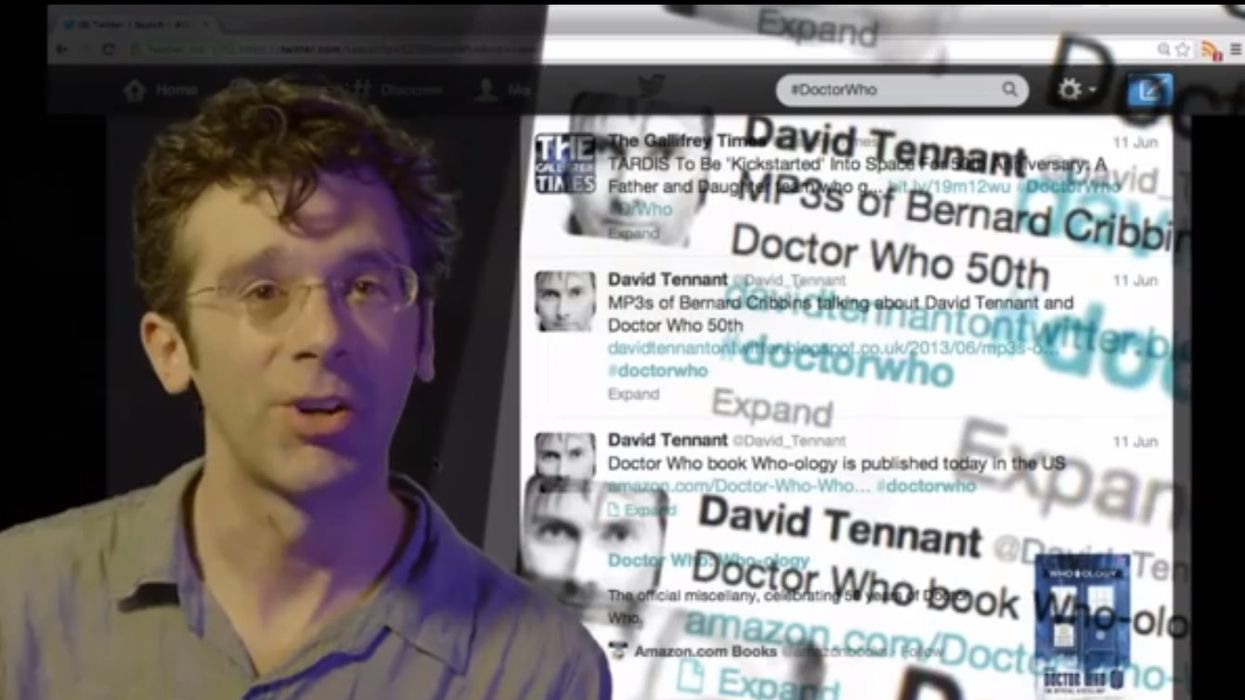How Silly Fan Art On the 'Doctor Who' Tumblr Is Reinventing the Theatrical Experience

I recently wrote about new technologies that might be reinventing the form of cinema. However, all these groovy tools focused on one aspect of media: how the individual receives content into their brain (like, in the future, directly.) What about the missing element of cinema that many No Film Schoolers have cited as the best part of the fading theatrical experience: being part of an audience? Two nerds of the highest caliber, Kevin Slavin of the MIT Media Lab, and Kenyatta Cheese of Know Your Meme, have an interesting viewpoint on how looking up hashtags about the Doctor’s TARDIS may actually point you to the real cutting edge technologies of storytelling. (I knew it!)
In this video from the people behind Future of StoryTelling, whose second annual summit of technology and media heavyweights was held last week, Slavin and Kenyatta explain a brief history of the audience in the wake of television, and how a show that spawns 21 million individual posts every month are making use of the today's audience incarnate:
The Future of StoryTelling piece points out the basic shift in the experience of the audience in the last fifty+ years:
When TV was invented, the way that humans are entertained was changed forever. Unlike theater or a concert, where the audience collectively watches something, TV provided isolated entertainment—entertainment that was, in some ways, devoid of an audience. Starting with the laugh track, which created the illusion of an audience, people have tried to connect with each other, to create an audience, ever since.
Sure, Cinema is a mere century old, and TV even less so, but storytelling, the basic force behind cinema, has been around in every documented culture of humans ever to roam the earth. (Javanese shadow puppetry has existed since the 900s CE, and does it really get any better than that?) And in each documented culture, there was the presence of average people comprising the audience.
Slavin suggests that today's audience hasn't disappeared since we started consuming media alone, but is appearing in new ways, as with the Doctor Who Tumblr, that assembles fan art, GIFs, and near-live riffs (that are possible in between the downtime from the UK to the USA premieres of the show) to create that familiar audience feeling:
Whether that means going to the bar to watch TV together, whether that means going to the stadium to watch something together, whether that means going on Tumblr to watch Doctor Who together, we will find out ways to do that. The idea that everybody in the audience is themselves aware of the audience -- this is the most profound shift in all of the technologies that are changing entertainment.
What do you think -- is sharing your experiences online with others a meaningful part of a TV show for you? Are GIFs, memes, trending topics on Twitter, and other cultivated creativity from those of us spending way to much time on the internet becoming the profound experience of the audience?
Share your thoughts below.
Link: The Audience Has An Audience -- Future of StoryTelling











